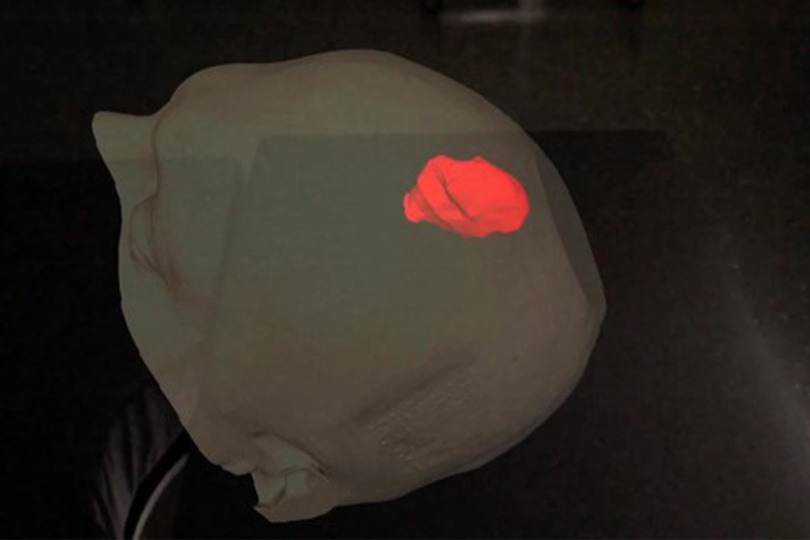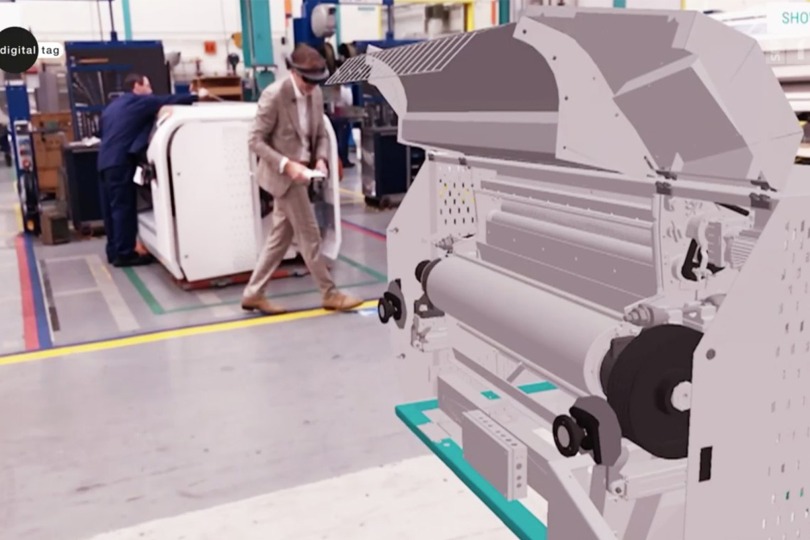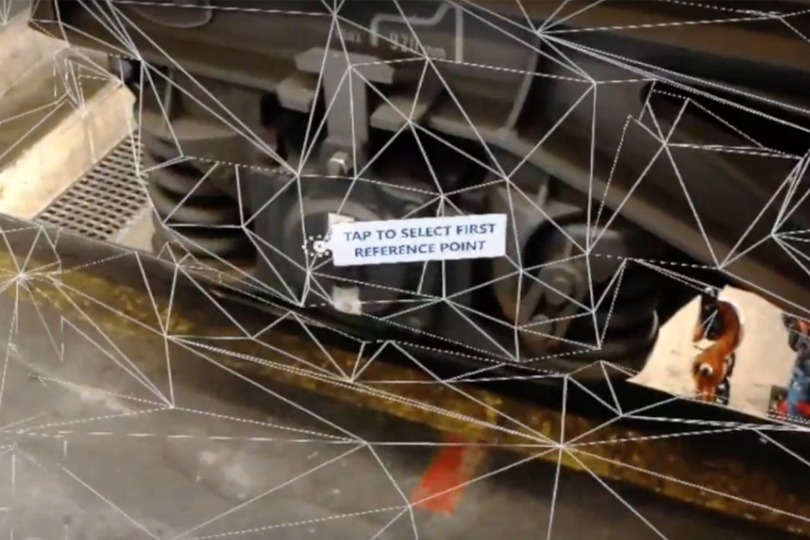Let's take a look at the current state of the technology. Airline pilots have known it for dozens of years as the "Head-Up Display", or HUD, which projects additional or expanded information directly onto the windshield. Today this type of HUD is yet standard equipment in many cars. Information, like the speed and directions from the navigation system, are displayed directly in the driver's field of vision so as not to divert their gaze (thus the name, because the head stays up). The information is virtually embedded directly into the environment. A navigation arrow appears to be lying directly on the road, a safe distance bar tells the driver how much distance to maintain from the car in front of them.
Smartphones push AR evolution
Over the last few years, a number of devices have come on the market that have at times brought new terminology with them. Even the software development is moving along rapidly: Development environments like "Unity" allow for very fast testing and developing of solutions with three-dimensional objects. Apple and Google are integrating Augmented Reality platforms into their operating systems. As a result, today almost everyone has an AR-capable device in their pocket: the smartphone. Accordingly, the most work is currently being done here. VR and AR applications are popping up everywhere like weeds. Well-known example: Ikea. With the new AR apps, the customer of the Swedish furniture manufacturer can see how that sofa will look in their living room before buying it, hikers can recognize every mountain peak with AR apps, and children convert their drawings into 3D figures or hide virtual treasures in the real nursery.
But what are the actual differences between AR, VR, and MR?
Virtual Reality: Into another world
Let's start with Virtual Reality. As the name implies, VR applications transport you to a different world. You are literally immersed in the Virtual Reality, which is also called "immersive reality" or even "total immersion".
In order to plunge in to such a world, you use VR glasses. The term "glasses" can lead to some confusion though: You don't actually look through them, but instead you have a small screen in front of your eyes that projects a unique world. In so doing, a stereoscopic view can be achieved that suggests a three-dimensional depth. Only very limited interaction with the space takes place though. One of the bigger technical limitations for all VR glasses is the somewhat poor resolution on the screen for the intended use.hen you look through the lenses at a very close screen, the pixels are visible.
Augmented Reality: Enhances the world view
By contrast, enhanced reality – Augmented Reality – is not immersive. The real world is super-imposed with additional information. If you use a smartphone as an AR device, the real space is captured by the camera and displayed on the screen. The additional information is then embedded in it. The best known example of an AR application may be the game "Pokémon Go". The "Google Glass", presumed dead, is also an AR device and is still manufactured in an enterprise version. Since hands are not free when using the telephone, it is the applications capable of conveying content that are most useful in daily work environments.
Mixed Reality: the best of both worlds
When Microsoft launched the HoloLens, they connected their device with another term: Mixed Reality. The reality is no longer simply enhanced, the Virtual Reality is mixed with reality, or fused. You see the room with your own eyes while looking through glasses in which three-dimensional objects are displayed as holograms. Unlike conventional AR displays, this relieves the cognitive load or mental effort generally required of the user to imagine the 3D object. In addition to Microsoft's HoloLens, there are currently two other devices worth mentioning: the Meta 2 and the Magic Leap One from companies with the same names. Unlike the HoloLens, neither are complete computers, but instead require additional hardware connected with cables. What they have in common is a Head-Mounted Display (HMD). In the enterprise area, these AR-HMDs currently offer the most opportunities.
Current areas of application
Areas of application for VR include not only the entertainment industry (games, videos, etc.), but also architecture (virtual tour of a house), medical rehabilitation and therapies (training after a stroke or phobia therapy), or an actual roller coaster ride in artificial reality. A Swiss bank even launched a VR trading app with which you can trade real shares in a virtual space.
The exciting areas of application for AR and MR include architecture and product design: Plaster and wooden models are a thing of the past. Prototypes no longer need to be elaborately constructed, but instead are loaded directly from the CAD program to the AR application, so virtually teletransported.


